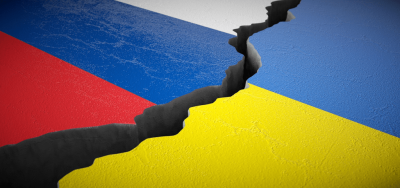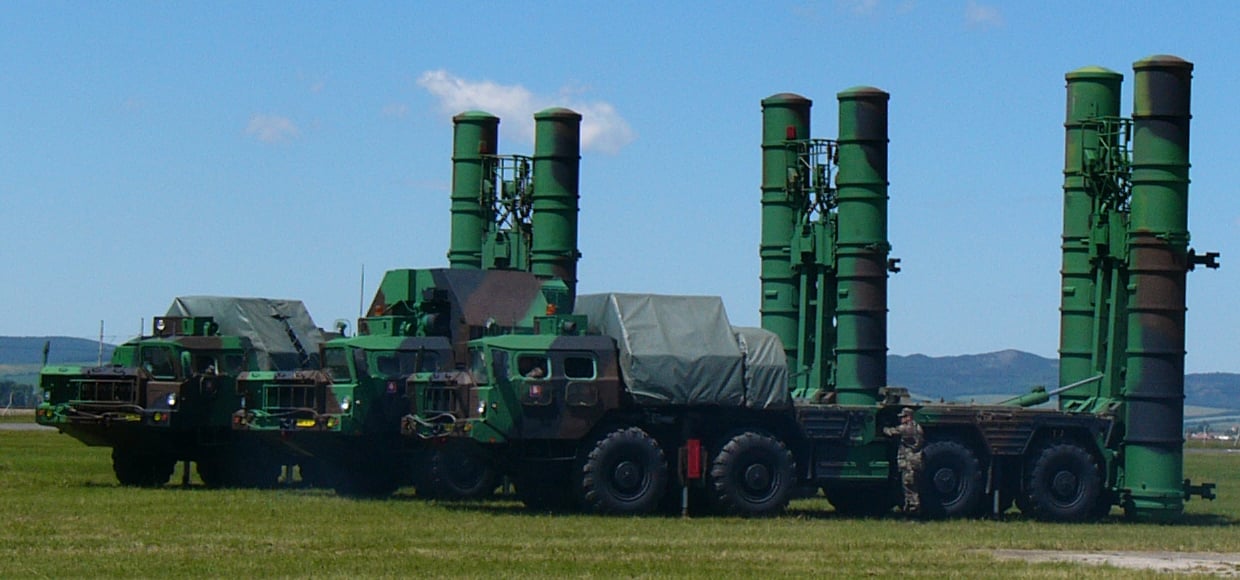US-NATO’s Response to the Istanbul Ukraine-Russia Peace Initiative: “Escalate the Conflict” through Weapons Deliveries

In order to scuttle the Ukraine-Russia peace initiative to Ukraine announced at the Istanbul talks on March 29, halting Russian military campaign north of the capital and focusing on liberating the Russian-majority Donbas in east Ukraine, practically spelling an end to Russia’s month-long offensive in the embattled country, NATO powers have announced transferring heavy weapons, including tanks and S-300 air defense system, to Ukraine to further escalate the conflict.
 Testifying before the Senate Armed Services Committee on Thursday, April 7, Chairman of the Joint Chiefs Gen. Mark Milley revealed that US and NATO countries have collectively provided roughly 60,000 anti-tank weapons and 25,000 anti-aircraft weapons to Ukraine since Russia’s invasion on Feb. 24.
Testifying before the Senate Armed Services Committee on Thursday, April 7, Chairman of the Joint Chiefs Gen. Mark Milley revealed that US and NATO countries have collectively provided roughly 60,000 anti-tank weapons and 25,000 anti-aircraft weapons to Ukraine since Russia’s invasion on Feb. 24.
“The Russian air force has not even today established air superiority let alone air supremacy, which is one of the reasons why they are having great difficulty on the ground,” the ambitious four-star general, who appears to have sights set on the presidential office after retirement, like Dwight Eisenhower, boasted before the committee:
“So the air superiority mission over Ukraine’s airspace has not been achieved, why is that? It’s because of the survival of the air defense systems, both the MANPADS (man-portable air defense systems) that we have been providing – stingers and the like from other NATO countries – plus the longer range SAMs (surface-to-air missiles) that have been provided and that they already had.”
“We are providing Ukrainians intelligence to conduct operations in the Donbas, that’s correct,” Defense Secretary Lloyd Austin confessed publicly for the first time that the US is providing intelligence to Ukrainian forces in response to the question from Republican Sen. Tom Cotton of Arkansas.
“We continue to provide useful information and intelligence to the Ukrainian Armed Forces in their fight,” a senior defense official acknowledged after Austin’s remarks. “As that fight migrates more to the Donbas region, we will adjust our information content and flow as required.”
In most cases, two sources familiar with the intelligence-sharing system told CNN, the intelligence being shared involved information about Russian force movements and locations, as well as intercepted communications about their military plans. And it is typically provided to Ukrainian officials as quickly as within 30 minutes to an hour of the US receiving it, making it nearly real-time intelligence sharing.
Literally fawning over the top Pentagon officials, Sen. Roger Wicker, an establishment Republican, asked Austin on why all of $3 billion in congressional authorization for US arms to Ukraine previously pledged by the Biden administration has yet to be provided. “We’ve only used $900 million of this – less than a third of the amount authorized. Why hasn’t the administration provided the full $3 billion?”
US security assistance is flowing into Ukraine “faster than most people would have ever believed conceivable,” Austin told the committee on Thursday – at times arriving in Ukraine within days of receiving authorization, he said. “From the time authorization is provided, four or five days later we see real capability begin to show up,” Austin said during the hearing on the Defense Department’s whopping $773 billion budget request.
Asking for permanent US military presence in Central Europe to deter Russia, the Chairman of the Joint Chiefs proposed before the House Armed Services Committee: “My advice would be to create permanent bases but don’t permanently station (forces), so you get the effect of permanence by rotational forces cycling through permanent bases,” he said.
“I believe that a lot of our European allies, especially those such as the Baltics or Poland and Romania, and elsewhere — they’re very, very willing to establish permanent bases. They’ll build them, they’ll pay for them.”
“I do think this is a very protracted conflict and I think it’s at least measured in years. I don’t know about decades, but at least years for sure,” said Milley. “I think that NATO, the United States, Ukraine and all of the allies and partners that are supporting Ukraine are going to be involved in this for quite some time.” (emphasis added)
“We are now facing two global powers: China and Russia, each with significant military capabilities both who intend to fundamentally change the rules based current global order. We are entering a world that is becoming more unstable and the potential for significant international conflict is increasing, not decreasing,” Gen. Milley said.
Czechoslovakia used to have the most advanced military-industrial complex in Central Europe during the Soviet era. After the dissolution of the Soviet Union and subsequent separation of the “conjoined twins” in 1993, the Czech Republic has inherited the Soviet weaponry. Famous of its arms black market, Czech weapons have been found in war theaters as far away as Syria, Libya and South Sudan.
The Czech Republic had delivered tanks, multiple rocket launchers, howitzers and infantry fighting vehicles to Ukraine among military shipments that had reached hundreds of millions of dollars and would continue, two Czech defense sources confided to Reuters.
Defense sources confirmed a shipment of five T-72 tanks and five BVP-1, or BMP-1, infantry fighting vehicles seen on rail cars in photographs on Twitter and video footage this week. “For several weeks, we have been supplying heavy ground equipment – I am saying it generally but by definition it is clear that this includes tanks, infantry fighting vehicles, howitzers and multiple rocket launchers,” a senior defense official said.
“What has gone from the Czech Republic is in the hundreds of millions of dollars.” The senior defense official said the Czechs were also supplying a range of anti-aircraft weaponry. Independent defense analyst Lukas Visingr said short-range air-defense systems Strela-10, or SA-13 Gopher in NATO terminology, had been spotted on a train apparently bound for Ukraine.
One agreed shipment authorized by the German government includes 56 Czechoslovak-made infantry fighting vehicles that used to be operated by East Germany. Berlin passed the IFVs on to Sweden at the end of the 1990s, which later sold them to a Czech company that now aims to sell them to Kyiv, according to German Welt am Sonntag newspaper.
But in a significantly escalatory move, virtually scuttling the Russian peace initiative to Ukraine announced at the Istanbul talks on March 29 and the subsequent withdrawal of Russian forces from the rest of the embattled country, excluding Russian-majority Donbas in east Ukraine, Slovakia has struck a deal with NATO for transferring its Soviet-era S-300 air defense system to Ukraine in return for the transatlantic military alliance delivering four Patriot missile systems to Slovakia.
“I can confirm that Slovakia donated the S-300 air defense system to Ukraine based on its request to help in self-defense due to armed aggression from the Russian Federation,” Slovakian Prime Minister Eduard Heger announced Friday.
 Although NATO has provided thousands of anti-aircraft MANPADS to Ukraine’s security forces and allied neo-Nazi militias, those were portable shoulder-fired surface-to-air missiles, whereas S-300 air defense system, equivalent in capabilities to American Patriots, is a vehicle-mounted advanced system that could practically enforce a “no-fly zone” over Ukraine’s airspace, a longstanding demand of Ukrainian politicians, within the range of the battery. The Slovak army website said its version of the S-300 battery had a range of 75 km and could strike targets up to 27 km above ground.
Although NATO has provided thousands of anti-aircraft MANPADS to Ukraine’s security forces and allied neo-Nazi militias, those were portable shoulder-fired surface-to-air missiles, whereas S-300 air defense system, equivalent in capabilities to American Patriots, is a vehicle-mounted advanced system that could practically enforce a “no-fly zone” over Ukraine’s airspace, a longstanding demand of Ukrainian politicians, within the range of the battery. The Slovak army website said its version of the S-300 battery had a range of 75 km and could strike targets up to 27 km above ground.
Negotiations for the transfer of S-300 air defense system to Ukraine had been going on for weeks. The Dutch government announced on March 18 it would send a Patriot missile defense system to Sliac, Slovakia, as part of NATO moves to strengthen air defenses in Eastern Europe. “The worsened safety situation in Europe as a result of the Russian invasion of Ukraine makes this contribution necessary,” Dutch Defense Minister Kajsa Ollongren said in a statement. In addition, Germany also sent two Patriot missile systems to Slovakia.
Along with the Patriot batteries, the Dutch also announced sending a contingent of 150-200 troops, who would operate and also train Slovak forces in operating the American air defense system, as the security forces of Slovakia as well as Ukraine are only trained to operate Russian-made military equipment, which many NATO countries that are former Soviet states possess.
Texas Rep. Mike McCaul, the top Republican on the House Foreign Affairs Committee, told Politico on March 16: “The U.S. was working with allies to send more S-300 surface-to-air missile systems to Ukraine. The country has had the S-300 for years, so troops should require little-to-no training on how to operate the Soviet-era anti-aircraft equipment. CNN reported that Slovakia had preliminarily agreed to transfer their S-300s to Ukraine.
“A Western diplomat familiar with Ukraine’s requests said Kyiv specifically has asked the U.S. and allies for more Stingers and Starstreak man-portable air-defense systems, Javelins and other anti-tank weapons, ground-based mobile air-defense systems, armed drones, long-range anti-ship missiles, off-the-shelf electronic warfare capabilities, and satellite navigation and communications jamming equipment.”
To further help, there is a push to get Eastern European allies to send new air defense systems to Ukraine that the US doesn’t have. At the top of the list are mobile, Russian-made missile systems such as the SA-8 and S-300. Like the S-300, Ukraine also possesses SA-8s. The SA-8 is a mobile, short-range air defense system still in the warehouses of Romania, Bulgaria and Poland. The larger, long-range S-300 is still in use by Bulgaria, Greece and Slovakia.
Defense Secretary Lloyd Austin’s trip to Europe in mid-March included not only NATO headquarters in Brussels, but also stops in Bulgaria and Slovakia — countries that own S-300s and SA-8s — before heading back to Washington.
Previously, Slovakia’s defense minister said on March 17 that the country was willing to give Ukraine its S-300 surface-to-air missile defense systems if it receives a “proper replacement.” Speaking at a press conference in Slovakia alongside US Secretary of Defense Lloyd Austin, Slovak Defense Minister Jaroslav Nad said Slovakia was discussing the S-300s with the US and Ukraine. “We’re willing to do so immediately when we have a proper replacement. The only strategic air defense system that we have in Slovakia is S-300 system,” he added.
Lloyd Austin declined to say whether the United States might be willing to fill the gap. “I don’t have any announcements for you this afternoon. These are things that we will continue to work with all of our allies on. And certainly, this is not just a US issue. It’s a NATO issue,” Austin said while diplomatically evading confirming the barter deal for which he had traveled all the way from Washington to Eastern Europe.
NATO member Slovakia had one battery of the S-300 air defense system, inherited from the Soviet era after the break-up of Czechoslovakia in 1993. Following the Slovakia visit, Lloyd Austin also visited Bulgaria on March 18. Bulgaria has S-300 systems, but the country made it clear it had no plans to send any to Ukraine.
Bulgarian President Rumen Radev prudently said that any arms supplies to Ukraine were equivalent to the country being dragged into war. Ultimately, he said, such an issue should be decided by the parliament. He also said that Bulgaria needed its S-300 for its own air defense, particularly for the Kozlodui nuclear power plant.
Slovakian Prime Minister Eduard Heger said Slovakia would receive additional equipment from NATO allies to make up for the transfer. Defense Minister Jaroslav Nad subsequently announced that Slovakia would receive the fourth Patriot missile system from the United States next week.
US Defense Secretary Lloyd Austin said the United States would place one Patriot system in Slovakia in the coming days and it would be operated by US troops. “Their deployment length has not yet been fixed, as we continue to consult with the Slovakian government about more permanent air defense solutions,” Austin said in a statement.
“As the Russian military repositions for the next phase of this war, I have directed my administration to continue to spare no effort to identify and provide to the Ukrainian military the advanced weapons capabilities it needs to defend its country,” President Joe Biden said while thanking Slovakia for sending its S-300 system to Ukraine.
In a spirit of reconciliation, Kremlin spokesman Dmitry Peskov said Friday Russia’s military “operation” in Ukraine could end in the “foreseeable future” as goals were being reached and negotiations were ongoing.
“The operation continues; the goals are being achieved. Substantive work is being carried out both through the military in terms of advancing the operation, and through the negotiators who are in the negotiation process with Ukrainian counterparts,” Peskov told reporters. “We are talking about the foreseeable future,” he added when asked for a timeline.
Dismissing Russia’s peace overtures to Ukraine as “nothing more than a smokescreen,” however, US and European officials voiced skepticism over Russia’s “sincerity and commitment” towards the peace talks, underlining that only a full ceasefire, troop withdrawal and return of captured territory to Ukraine would be enough to trigger discussions over lifting sanctions on Russia’s economy.
“The notion that you would reward Putin for occupying territory doesn’t make sense … it would be very, very difficult to countenance” a senior EU official confided to the Financial Times. “There’s a disconnect between these negotiations, what really happens on the ground, and the total cynicism of Russia. I think we need to give them a reality check,” the official added.
Advising Ukrainians to hold out instead of rushing for securing peace deal with Russia, the Sunday Times reported, senior British officials were urging Ukrainian President Volodymyr Zelenskyy to instruct his negotiators to refuse to make concessions during peace negotiations with Russian counterparts.
A senior government source said there were concerns that allies were “over-eager” to secure an early peace deal, adding that a settlement should be reached only when Ukraine is in the strongest possible position.
In a phone call, Boris Johnson warned President Zelensky that President Putin was a “liar and a bully” who would use talks to “wear you down and force you to make concessions.” The British prime minister also told MPs it was “certainly inconceivable that any sanctions could be taken off simply because there is a ceasefire.” London was making sure there was “no backsliding on sanctions by any of our friends and partners around the world,” he added.
About the author:
Nauman Sadiq is an Islamabad-based geopolitical and national security analyst focused on geo-strategic affairs and hybrid warfare in the Af-Pak and Middle East regions. His domains of expertise include neocolonialism, military-industrial complex and petro-imperialism. He is a regular contributor of diligently researched investigative reports to Global Research.

